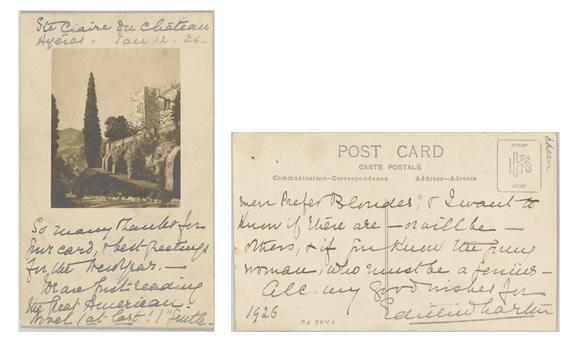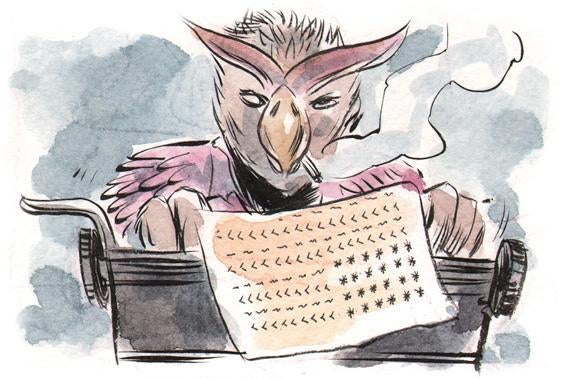I’m Russian. A proud U.S. citizen, mind you, but Russian all the same. Born and raised by Russian parents in Moscow. I also happen to be a writer. Could I, then, ever write the Great American Novel? That is to say, we’ll take it for granted that I’m fully capable of writing a Great novel. Naturally. (Or so I hope.) But am I American enough to produce a GAN, as Henry James dubbed it in 1880?
Since its inception, the GAN has been a remarkably enduring concept, staying stubbornly put in critical and popular discourse alike despite numerous—some, almost successful—murder attempts. But though the GAN as such seems here to stay, the way we think about it has evolved significantly from its original conception to the present day. And that evolution is as inevitable as it is profound.
The first time I heard the phrase, it struck me as an altogether bizarre idea. After all, there’s no such thing as the Great Russian—or English, or French, or what have you—Novel. Great novels, to be sure, and ones written by great men. But why the requirement of a nationality—and why only here, only in America? (I’m not alone in my bewilderment: Martin Amis, another foreigner, was struck in a 1995 essay by how “essentially American” the very notion was. He defended the idea, though, and even named a winner, The Adventures of Augie March.)
The concept of the GAN seems to have been born in the late 1860s. In an 1868 The Nation essay, Civil War veteran John William DeForest—himself an aspiring GAN-ist—described the GAN as “the picture of the ordinary emotions and manners of American existence,” a work that painted “the American soul.” And what, precisely, did that soul entail? There was but one real—though unquestionably daunting—requirement: it had to be supremely national in breadth and scope. The Scarlet Letter—now a perennial presence on modern GAN lists—could never be GAN material, wrote DeForest. It was “full of acute spiritual analysis,” but was so focused on the ineffable that it had “only a vague consciousness of this life.” Its characters, DeForest complained, “are as probably natives of the furthest mountains of Cathay or of the moon as of the United States of America.” What an affront.
And so began a tradition that’s persisted as long as the search for the Great American Novel: The insistence that certain great American novelists fail to write in a strictly national vein, and so, cannot produce the GAN no matter how otherwise great their writing may be.
Who, then, if not Hawthorne? The closest GAN contender to date, according to DeForest, was Uncle Tom’s Cabin. Did he think much of the book? Not really. It had “very noticeable faults” and lacked “comeliness of form.” But, it had “a national breadth”—and, therefore, could be put in the running despite its lack (however arguable) of literary worth. Indeed, it’s striking how specifically nonliterary were the terms DeForest chose to describe its merits: The novel, he wrote, is “a picture of American life, drawn with a few strong and passionate strokes, not filled in thoroughly, but still a portrait.” But one hangs a portrait on the wall. One doesn’t read it.
For DeForest, the “American” in GAN is anything but incidental. Great novels, even written by an American about Americans, don’t qualify if they don’t capture that essence. Middling novels, if they happen to paint the picture of the ordinary manners of American existence, do. Can the Great American Novel, then, not be great?
It didn’t take long for the concept of the GAN to vex critics and authors alike. As early as 1899, the New York Times was likening “the Great American Novel” to “the Sea Serpent” in its review of Frank Norris’s McTeague, and just two years later, the very subject of that review pronounced that “the Great American Novel is not extinct like the dodo, but mythical like the hippogriff.” Before long, the great American novelists themselves were bristling at that requirement of essential Americanness.
In 1926, F. Scott Fitzgerald, in an essay on Hemingway, lashed out against the inherent parochialism of the “American” epithet. In his estimation, it not only had no place in great writing as such, but hampered novelists who were trying to achieve anything of distinction. The “necessity for an American background” caused writers to be “stupid-got with worry.” Even those of talent had “botched their books by the insincere compulsion to write ‘significantly’ about America.”

Photo courtesy of The Morgan Library & Museum; purchased on the Fellows Fund as the gift of Frederick R. Koch, 1981. Photography: Graham S. Haber, 2012.
That same year, Edith Wharton had the subject on her mind, when she wrote on a postcard that she was reading “the Great American Novel (at last!)”: Anita Loos’ Gentlemen Prefer Blondes. A year later, in a Yale Review essay, Wharton gave the GAN concept a longer consideration, dismissing the idea that “the great American novel must always be about Main Street, geographically, socially, and intellectually.” She argued that a much truer path would be to show “the modern American as a sort of missionary-drummer selling his wares and inculcating his beliefs from China to Peru.” (In the end, she still recommended Gentlemen.)
By 1938, the GAN’s “American” quality was succumbing to irony, with the publication of Clyde Brion Davis’ The Great American Novel—the first of many satirical books of that title. Had the idea changed much since the times of DeForest? Not really. “I want my novel to be America,” writes Davis’ hero. “I want it to hold the romance of the Pilgrim fathers … the romance of the Spanish conquistadores and of the French padres. …” And on and on, from manifest destiny, to the gold rush, to the railroad and the motion picture. Of course, the hero doesn’t have time to enact his plan, and his demurral recalls DeForest’s “portrait” language: “Certainly it would be too broad a canvas for me to paint now.”

E. F. Coope/Beinecke Rare Book & Manuscript Library, Yale University.
From inception, to debate, to parody. And finally, to death. By the 1970s, the GAN had been killed off several times—once, at the turn of the century, with the dismissals of Norris, William Dean Howells, Mark Twain, and others, and again in the mid-20th century, with the rise of critics who called the GAN search amateurish. In his 1972 Esquire essay “Why They Aren’t Writing the Great American Novel Anymore,” Tom Wolfe went so far as to say that authors had lost all interest in the thing. “Most serious American novelists would rather cut their wrists than be known as ‘the secretary of American society,’ ” he wrote. “Who wants such a menial role?” The void, according to Wolfe, was left open to the New Journalists to chronicle the times. On the other hand, Wolfe soon turned to novels—great big novels about America, in fact, his eye apparently on the prize. But a slightly different prize at that: Whereas the “portrait” that DeForest had envisioned was to be a sweeping landscape of American past and present, a great big vista that encompassed America in the most upper-case and grand sense, the one that Wolfe was gunning for was much closer in style to, say a nature morte, a still life—one that still captured a breadth of material, but that dug deep into one instant, one moment, one snapshot.
In an interview, scholar Lawrence Buell called the idea of the GAN “slippery but durable.” And that, I think, is exactly it. The GAN is neither extinct nor mythical. It may instead be more akin to the chameleon: An animal that transforms itself according to its surroundings, that blends into an ever-changing environment. And maybe the environment has now changed so dramatically that the chameleon has been lost forever—or at least made redundant.
In 2006, the New York Times Book Review conducted a survey: Authors were asked to nominate “the single best work of American fiction published in the last 25 years.” While there was some bickering over the question itself, an undisputed victor emerged: Toni Morrison’s Beloved. Over 40 years earlier, a similar survey by the now-defunct Book Week had also yielded a clear winner: Ralph Ellison’s Invisible Man.
Morrison, Ellison: Would they have been possible GAN contenders to DeForest? In one sense, it’s not too far a stretch to imagine the same man that endorsed Uncle Tom’s Cabin nodding his head at these nominees—they, too, wrestle with that same, most uniquely American of topics, slavery and its deep societal aftereffects. One could argue, then, that one enduring element in the GAN is that it confronts the problems that define a nation—in this case, American race history. But in truth, Uncle Tom’s Cabin was a novel of historical sweep: It presented a broad portrait of America’s history to that point. The Invisible Man and Beloved, however, glimpse that history, but through a lens—the lens of race. It’s a distinction worth making. The inclusive panorama versus the knowingly and consciously selective focus on one slice. But not just any slice. A slice that is seen as defining, as providing identity and concrete form both in itself and against the world. And while that slice can be race, it need not be—in fact, it may be less and less accurate of a focus the further into the future we go.
Today’s American soul is a far cry from that of the mid-1800s. With translations and multiculturalism, fluid borders, constant travel, and cultural intermingling, what does it even mean, American? Race, slavery, these are all indelible parts of the picture. But increasingly, racial history may be becoming one of an array of ever-mingling, ever-changing, ever-shifting possibilities. Surely, just as apt a modern-day contender for the title would be someone like Teju Cole or Junot Diaz or Jhumpa Lahiri—someone who embodies America’s flow of identities, the reimagining of the American Dream. That, in a way, would be far more akin to the spirit of the GAN—the vista that tries to capture what it means to be American, in contrast to being anything else.
“American” is an inherently shifting concept. What it means to be American is changing, to the point where it has become close to what it has always been for the Old World: an irrelevant modifier. A modifier that has expanded, has transformed to the point where it may as well fall away.
Once, the GAN was uniquely American. That need has passed. Maybe it’s time for that beast to finally become what Frank Norris argued for all along, in the far less quoted ending of his famed hippogriff proclamation: “The thing to be looked for is not the Great American Novelist, but the Great Novelist who shall also be an American.” A great novel written by an American—even if that American’s parents happen to be Nigerian, or Dominican, or Indian. Or, as the case may be, Russian.
See all the pieces in this month’s Slate Book Review.
Sign up for the Slate Book Review monthly newsletter.
